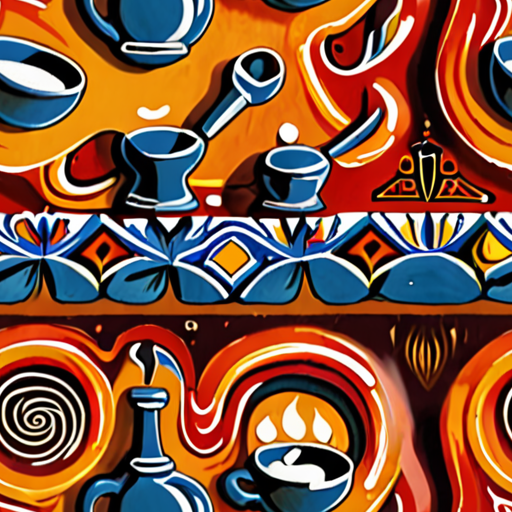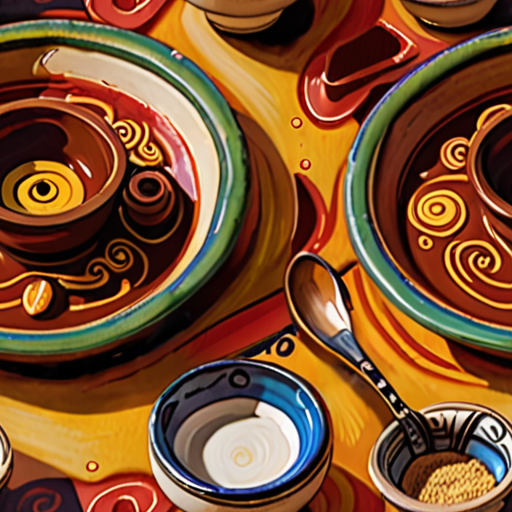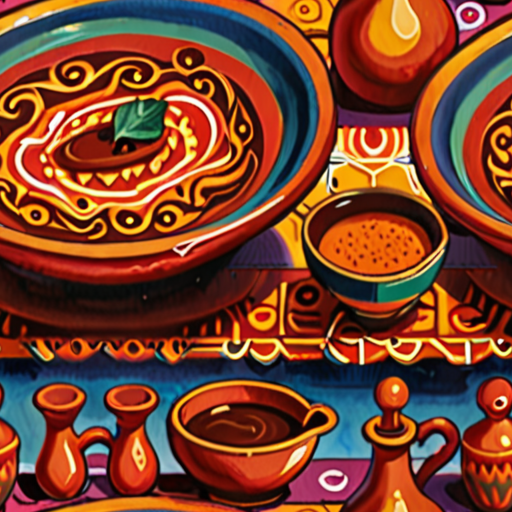The history of Mexican mole is a fascinating journey through time, culture, and culinary evolution. Beloved across the country, mole is more than just a sauce—it’s a dish that carries the weight of centuries of tradition, blending indigenous ingredients with Spanish influences to create a unique flavor profile. While modern versions of mole may seem complex, its origins trace back to ancient times, with roots in pre-Columbian civilizations. Over the centuries, mole has evolved, becoming a symbol of Mexican identity and a staple at countless tables. From its humble beginnings to its current status as a national dish, the story of mole is one of resilience, innovation, and the enduring pursuit of culinary excellence.

The Origin of the Mexican Mole
The term “mole” originates from the Nahuatl word “molli,” which translates to “sauce” or “concoction.” This ancient term reflects the rich culinary heritage of Mexico, where mole has been a staple in Mexican cuisine for centuries.
While the origins of mole can be traced back to pre-Aztec times, it was under the Aztec civilization that mole began to evolve into the complex sauce we recognize today. The Aztecs created mole as a thick, hearty sauce made from a blend of ingredients such as chocolate, honey, and chili peppers. Over time, this dish became a symbol of wealth and status, often served during festivals and special occasions.
By the time of the Spanish conquest, mole had already become a cornerstone of Mexican cooking. The Spaniards introduced new ingredients to the mix, such as tomatoes, onions, and squash, which were incorporated into the recipe. These additions further enriched the flavor profile of mole, making it the multi-layered, aromatic dish we know today.
Today, mole remains a beloved part of Mexican cuisine, with regional variations spanning from Oaxaca to Puebla. Its versatility pairs perfectly with a variety of dishes, from meats to cheeses and even sweet desserts. If you’re looking to dive deeper into the world of mole, Panito Mole is a fantastic resource for authentic recipes and culinary insights: Panito Mole .
What Does Mole Symbolize in Mexican Culture?
Mole holds a special place in Mexican culture, far beyond its role as a delectable dish. It is deeply rooted in tradition, history, and celebration, embodying values such as richness, complexity, and cultural pride. Here’s a breakdown of its significance:1. **Celebration and Joy**: Mole is traditionally served during festive occasions, weddings, and family gatherings. Its elaborate preparation and rich flavors symbolize abundance and joy, making it a staple at joyful events.2. **Cultural Identity**: Mole reflects Mexico’s diverse heritage. Each region has its unique variation, blending indigenous ingredients with Spanish influences. This fusion highlights the country’s rich cultural tapestry.3. **Symbol of Status and Affection**: In many households, preparing an authentic mole is seen as a mark of skill and love. Sharing a plate of mole with others is an act of hospitality and care, signifying closeness and respect.4. **Complexity and Precision**: The creation of mole involves a meticulous balance of ingredients, spices, and textures. This attention to detail mirrors the precision valued in craftsmanship and artistic endeavors, making mole a symbol of mastery.5. **Historical Significance**: Mole has historical roots dating back to pre-Columbian times. Its evolution through various civilizations showcases Mexico’s ability to adapt and innovate, preserving traditions while embracing change.For those looking to explore mole further, Panito Mole offers a wealth of resources and recipes to help you master this iconic dish. From classic mole poblano to innovative variations, our platform is your gateway to discovering the true essence of Mexican cuisine. Explore Panito Mole Recipes.Additionally, if you’re interested in learning more about the cultural significance of mole, we recommend visiting Mole Poblanoand Chiles en Molefor deeper insights into this beloved tradition.
What is the story behind mole?
The origins of mole, one of Mexico’s most iconic dishes, trace back to 1685 in the Santa Rosa Convent in Puebla, Mexico. Legend has it that Sister Andrea de la Asunsin, a nun, created the dish to impress the Viceroy of New Spain, Tomás Antonio de la Cerda y Argüño. Her creation quickly became a staple in Mexican cuisine, blending indigenous ingredients with Spanish influences to form a rich, complex sauce.Mole has evolved over centuries, with each region in Mexico developing its own unique variations. Oaxaca is particularly famous for its bold, spicy versions, while other regions favor sweeter, fruitier profiles. The dish is not just a meal but a celebration of Mexican culture, often served during holidays and special occasions.Today, mole remains a beloved part of Mexican tradition, with chefs perfecting their recipes and sharing the secrets of this ancient dish. From its humble beginnings to becoming a global favorite, mole continues to capture the essence of Mexico’s rich culinary heritage.For more insights into the history and variations of mole, visit [Panito Mole](https://panito-mole.com/) and explore their expert-led recipes and cultural insights. Discover how mole has transcended borders and become a symbol of Mexican pride and flavor.
The History of the Mole
The mole is a fundamental unit of measurement in chemistry, defined as the amount of a substance that contains Avogadro’s number of particles, approximately \(6.02214076 \times 10^{23}\) mol\(^{-1}\). This unit was introduced in the 19th century to standardize chemical measurements and facilitate international trade.### Early ConceptsThe concept of the mole builds upon earlier ideas in chemistry, particularly the notion of “equivalents.” In electrochemistry, an equivalent was defined as the amount of a substance that could transfer one mole of electrons during a reaction. This concept was crucial in understanding voltaic cell chemistry and led to the development of the mole as a standardized unit.### Introduction of the MoleThe mole as we know it today was formally introduced by the German chemist Wilhelm Ostwald in 1894. He derived the term “mole” from the German word “Mol,” meaning “small heap” or “collection.” Ostwald aimed to create a consistent unit for measuring the amount of substances in chemistry, addressing the lack of standardization that plagued global trade and scientific collaboration.### Standardization and SI SystemThe mole became part of the International System of Units (SI) in 1961, solidifying its place as a fundamental measurement in science. Its definition, tied to Avogadro’s law, ensures precision and consistency across various fields, from physics to biology.### Applications and ImpactThe mole has revolutionized industries, from pharmaceuticals to manufacturing. In chemical synthesis, precise control of mole quantities is essential for product consistency and safety. Its widespread adoption has streamlined research and production processes, making it an indispensable tool in modern chemistry.By understanding the history of the mole, we appreciate its significance as a cornerstone of scientific measurement, reflecting the ingenuity of early chemists and the evolution of standardized systems.
What is the Story Behind Moles?
Moles are small growths that appear on the skin, typically formed when melanocytes – the cells responsible for producing melanin – cluster together. These clusters can occur anywhere on the body, most commonly on areas exposed to sunlight, such as the face, arms, and legs. While moles are usually harmless, certain factors like genetics and UV exposure can influence their formation and distribution.
Formation and Distribution
– Moles begin developing during fetal development, with the majority appearing by adulthood.- They are distributed throughout the body, though individuals may have varying numbers due to genetic predisposition.- Sunlight exposure can lead to moles darkening or increasing in number over time.
Medical Significance
– Moles play a crucial role in protecting the skin from harmful UV rays by absorbing and scattering light.- While most moles are benign, some may be precancerous or cancerous, particularly those with unusual characteristics like irregular borders or color changes.
Types of Moles
– Common Moles:Typically appear as small, flat, flesh-colored bumps.- Blue Moles:Rare and often associated with underlying blood vessels.- Beauty Marks:Larger, darker moles that can be cosmetically significant.
Cultural and Culinary Uses
– In many cultures, moles hold symbolic meanings, often representing beauty or strength.- In Mexican cuisine, mole sauce – a rich, complex blend of spices and ingredients – is a cornerstone of authentic dishes, showcasing the versatility of this beloved ingredient.
Prevention and Care
– Regular self-exams can help detect moles early, aiding in early intervention if needed.- Sunscreen use is essential to reduce the risk of mole-related issues, such as skin cancer.- If you notice changes in existing moles or develop new ones, consult a healthcare professional for evaluation.By understanding the story behind moles, we gain insight into their natural occurrence and significance, both medically and culturally.
The Legend Behind Moles
Moles have long been a subject of curiosity and folklore, with various cultures attributing them with unique meanings and stories. In many traditions, moles are seen as symbols of nature’s hidden aspects or connections to the earth. One particularly interesting legend surrounds moles in the context of Native American mythology, particularly in regions like Puget Sound, Washington.In Native American lore, moles are often associated with the underworld and are believed to guide spirits or connect the living to the dead. They are thought to carry messages from the land and are sometimes seen as transformers, capable of altering their appearance or shape. This duality between their underground existence and transformative abilities ties moles to concepts of rebirth and renewal.Moles are also considered to be mediators of weather and seasonal changes, influencing rain patterns and the growth of plants. Their presence is often interpreted as a sign of balance or harmony in nature. In some stories, moles are said to have played crucial roles in the creation of the land itself, burrowing tunnels that watered the soil and allowed for plant growth.This symbolism extends beyond nature to include themes of community and family. Moles are sometimes seen as protectors of children and family members, especially during times of illness or difficulty. Their small size and ability to disappear into the earth make them mysterious figures, often linked to secrets or hidden knowledge.In conclusion, moles hold deep cultural and spiritual significance, particularly in Native American traditions. Their association with the underworld, transformation, and natural processes underscores their importance as symbols of both mystery and balance in the world.




0 Comments